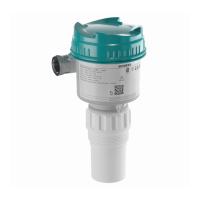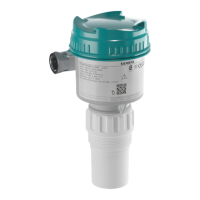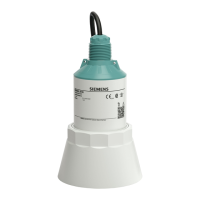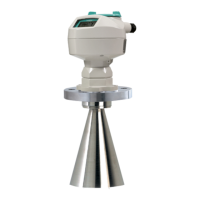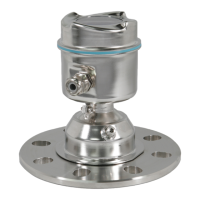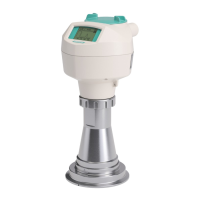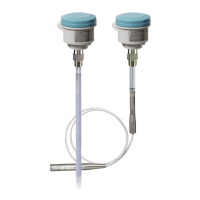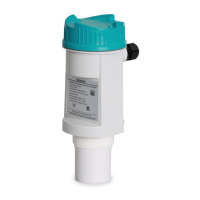
Do you have a question about the Siemens SITRANS LU150 and is the answer not in the manual?
| Type | Ultrasonic Level Transmitter |
|---|---|
| Measuring principle | Ultrasonic |
| Output signal | 4 to 20 mA |
| Process temperature | -40 to +80 °C |
| Process pressure | -0.5 to 3 bar |
| Enclosure rating | IP68 |
| Accuracy | ± 0.25% of range |
| Ambient temperature range | -40 to 80 °C |
| Communication | HART |
Explanation of the warning notice system and hazard grading used in the manual.
Guidance on selecting a suitable area for mounting, considering temperature and electrical interference.
Instructions for positioning the device to ensure a clear sound path and avoid obstructions.
Details on the available thread types and dimensions for mounting the SITRANS LU150.
Information on fitting the optional flange adapter for 3" ANSI, DIN, and JIS flanges.
Procedure for mounting the sanitary version of the SITRANS LU150 with a sanitary ferrule.
Instructions for installing the SITRANS LU150 using the FMS200 mounting bracket.
Steps for preparing and routing the cable into the device enclosure.
Visual representation of the device connection within a loop instrumentation setup.
Diagram and explanation of the electrical wiring for the SITRANS LU150.
Procedure for powering up the device and understanding initial display readings.
Methods for calibrating the mA output, including proportional and inversely proportional spans.
Step-by-step guide for calibrating the device using a known material level or target.
Instructions for performing a 4 mA calibration, including display indications and potential errors.
Instructions for performing a 20 mA calibration, including display indications and potential errors.
Understanding the graphical display indicators for GOOD, WAITING, and LOE/FAULT states.
Guide to accessing and modifying various operating parameters like calibration, blanking, and response.
Alternative calibration method for setting mA levels when reference points are unavailable.
Detailed steps for calibrating 4 mA using the scrolling method with display examples.
Detailed steps for calibrating 20 mA using the scrolling method with display examples.
Purpose and application of the blanking feature to ignore false echoes near the sensor.
Procedure to set or modify the blanking distance in seconds or meters.
Configuration of measurement response, agitator discrimination, filter, and fail-safe timer.
Steps to select and set the desired speed of response option (1-3).
Description of fail-safe defaults (full, empty, hold) triggered by echo loss or fault.
Procedure to select the appropriate fail-safe mode (full, empty, hold).
Explanation of the waiting period for fail-safe activation and its adjustability.
Options for selecting measurement units: meters or feet.
Steps to change the displayed measurement units between meters and feet.
Identifies causes for unreliable echoes and suggests checks for measurement issues.
Details on voltage, current, and surge ratings for the device.
Information on range, beam angle, and temperature compensation.
Description of the liquid crystal display, programming buttons, and memory.
Technical details for mA output, including range, span, accuracy, loading, and cable requirements.
Information on sensor housing, mounting options, enclosure material, and connection types.
Specifications for location, ambient temperature, humidity, and installation category.
List of certifications and approvals for the SITRANS LU150.
Graph illustrating the relationship between mA loop current and measurement interval in seconds.
